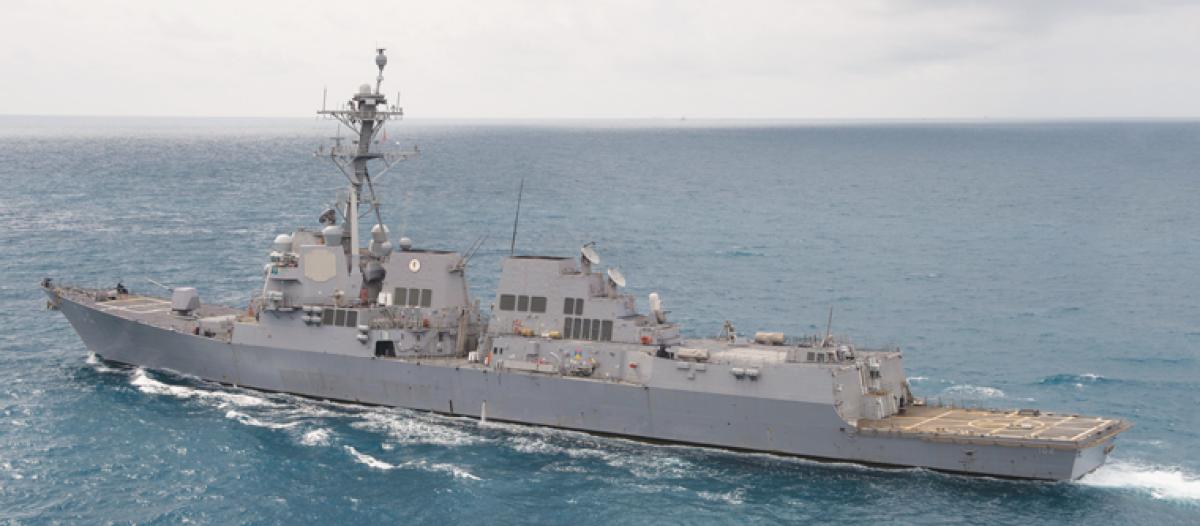This past November, the United States and New Zealand put decades of nuclear controversy behind them as the USS Sampson (DDG-102) sailed for Auckland to celebrate the New Zealand Navy’s 75th anniversary, marking the first visit of a U.S. warship to the country in 30 years. The event turned into a remarkable example of enduring friendship between allies, as a massive magnitude 7.8 earthquake struck while the Sampson was en route to the naval festivities. She immediately diverted to hard-hit Kaikoura, assisting authorities with earthquake response efforts alongside the frigate HMNZS Te Kaha, the multi-role vessel HMNZS Canterbury, and the oiler HMNZS Endeavour, and in concert with the Canadian frigate HMCS Vancouver, the Australian frigate HMAS Darwin, and a U.S. Navy P-3 Orion, all of which were fortuitously in the region for the anniversary celebrations.On 8 November, the Jamaica Defense Force (JDF) decommissioned its three largest coast guard craft, the HMJS Cornwall, HMJS Middlesex, and HMJS Surrey, pictured here. These three 205-ton Damen Stan-Patrol 4207-class vessels originally entered service a decade ago and had formed the core of the JDF Coast Guard. Since joining the fleet between 2005 and 2006, the trio had sailed a combined 200,000+ nautical miles and saved more than 2,000 lives while conducting patrol and rescue operations. The 140-foot offshore patrol vessels are powered by twin diesel engines with a range of 1,800 nautical miles while cruising at 12 knots. The class typically carried twin .50 caliber machine guns and were manned by a crew of 12. Two new vessels of the same type, also built by Daman shipyards in the Netherlands, are on order as replacements. The new vessels will be named Cornwall and Middlesex and are due for delivery in early 2017.
On 8 November, the Jamaica Defense Force (JDF) decommissioned its three largest coast guard craft, the HMJS Cornwall, HMJS Middlesex, and HMJS Surrey, pictured here. These three 205-ton Damen Stan-Patrol 4207-class vessels originally entered service a decade ago and had formed the core of the JDF Coast Guard. Since joining the fleet between 2005 and 2006, the trio had sailed a combined 200,000+ nautical miles and saved more than 2,000 lives while conducting patrol and rescue operations. The 140-foot offshore patrol vessels are powered by twin diesel engines with a range of 1,800 nautical miles while cruising at 12 knots. The class typically carried twin .50 caliber machine guns and were manned by a crew of 12. Two new vessels of the same type, also built by Daman shipyards in the Netherlands, are on order as replacements. The new vessels will be named Cornwall and Middlesex and are due for delivery in early 2017.
In October, Canada retired one of its longest-serving naval assets, the oiler HMCS Preserver. Built during the late 1960s and commissioned in the summer of 1970, Preserver was the second of two Protecteur-class replenishment ships that served as workhorses of the Canadian fleet. Displacing 8,400 tons light and nearly 25,000 tons fully loaded, these 564-foot vessels had a cargo capacity of more than 14,000 tons, including a mix of 12,000 tons of distillate fuel, 600 tons of diesel fuel, 400 tons of aviation fuel, 1,000 tons of dry cargo, and 1,250 tons of ammunition. The Preserver, and sister Protecteur, which retired in 2015, possessed four replenishment-at-sea stations and two 11-ton cranes fitted on the afterdeck. Armed with the Phalanx close-in weapon system and .50 caliber gun mounts, the vessels could carry three Sea King helicopters. The Preserver and Protecteur are to be replaced by at least two new Queenston-class joint support ships beginning in the 2020s.



